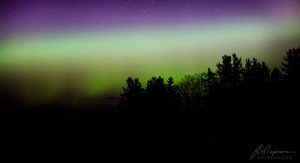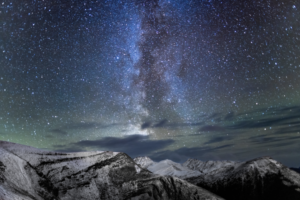
People & Culture
How to photograph the northern lights at lower latitudes
This photog lives in southern Ontario, but still gets amazing photos of the northern lights. Here’s how.
- 1777 words
- 8 minutes
This article is over 5 years old and may contain outdated information.
Science & Tech

The best show in the sky is taking place right now.
The Perseid meteor shower has sky-gazers grabbing coffee and heading out of the city for late night viewing of meteors and fireballs tonight. This popular meteor shower happens every summer, with reports of sightings going back 2,000 years.
People are likely to see more meteors during this shower than any other, says science journalist and author Peter McMahon. In the last few days, McMahon has seen several hundred meteors and says that Canadians should be able to spot 60-100 depending on their location. The best places for viewing are dark sky reserves.
The Perseid meteor shower is known especially for its fireballs, meteors that last longer and produce more colour than others. “Those are the really impressive meteors that have a big long streak,” says McMahon. He says the Perseid meteor shower has 40 to 50 per cent more fireballs than the next biggest meteor shower.

Named after the constellation in the sky where the shower appears to start off, this annual light display comes from the 26-kilometre wide 109P/Swift-Tuttle Comet, which orbits the sun once every 133 years. The comet’s tail leaves behind debris, which the Earth passes through each year. As it does so, meteors enter its atmosphere, creating streaks of light across the sky.
McMahon says the meteors themselves are only the size of pebbles, with fireballs ranging around the size of golf and tennis balls to boulders. But what sky-gazers are actually seeing in the sky is the air in front of the meteor. As the meteor pushes the air at 59 kilometres per second, friction builds up, causing the air to heat up.
“These things are going so fast that they burn up in the atmosphere, like an out-of-control spaceship that doesn’t have a space shield.”
According to NASA, the shower’s peak began early this morning and will continue into tonight. Skywatchers shouldn’t despair if they miss the peak time though. McMahon says that over the next few nights, if it is clear, people will be able to see dozens of meteors every hour.
NASA recommends that skywatchers let their eyes adapt to the dark and lie on their backs with their feet facing northeast, looking up at the sky above. After 30 minutes, people should be able to spot meteors.
Are you passionate about Canadian geography?
You can support Canadian Geographic in 3 ways:

People & Culture
This photog lives in southern Ontario, but still gets amazing photos of the northern lights. Here’s how.

Science & Tech
From economy to ecology, J.B. MacKinnon's creative work of non-fiction explores what the world would look like if we could just stop shopping

Science & Tech
From Roberta Bondar to Harriet Brooks, Canada has more than its fair share of women scientists to be proud of. However women are still a minority in the STEM fields

Travel
A guide to the annual Jasper Dark Sky Festival — and what you can learn when you gaze skywards.